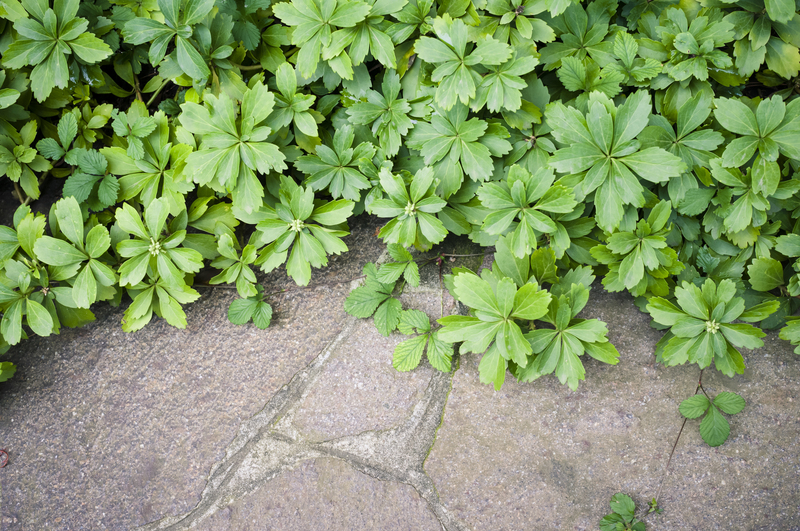Creating a Wonder-Filled and Child-Accommodating Garden
Posted on 17/09/2025
Creating a Wonder-Filled and Child-Accommodating Garden: Inspiring Curiosity and Fun Outdoors
A garden can be much more than a collection of plants and flowers. With thoughtful design and a sprinkle of imagination, your backyard can become a wonder-filled, child-accommodating garden--a magical place where young adventurers explore, play, learn, and bond with nature. Whether you are starting from scratch or rejuvenating an existing space, this comprehensive guide will walk you through creative ideas and practical steps to craft a safe, stimulating, and enchanting garden for children and the whole family.
Why Design a Child-Friendly Garden?
Children are naturally drawn to outdoor spaces where they can explore, discover, and engage with the natural world. A garden designed with their needs in mind nurtures physical development, sparks curiosity, encourages creativity, and promotes emotional well-being. Moreover, a child-accommodating garden provides a healthy alternative to screen time, fostering imaginative play and meaningful family moments in the fresh air.
The Benefits of a Wonder-Filled, Kid-Friendly Garden
- Promotes Physical Activity: Running, climbing, digging, and balancing support motor skills and overall fitness.
- Stimulates Curiosity and Learning: Observation of insects, plants, and natural cycles nurtures scientific thinking.
- Enhances Creativity: Outdoor play invites role play, invention, and artistic expression.
- Encourages Family Bonding: Shared gardening activities strengthen relationships and create lasting memories.
- Fosters a Love of Nature: A child-friendly garden instills respect and care for the environment.

Planning Your Child-Accommodating Garden
Transforming your outdoor space into a wonder-filled garden that delights children begins with thoughtful planning. Here are crucial aspects to consider:
- Safety first: Remove poisonous plants, secure ponds or water features, and avoid sharp tools or hazardous materials.
- Accessibility: Paths and surfaces should be level and easy to navigate for little feet.
- Sense of wonder: Integrate zones that surprise and captivate, from tunnels of greenery to hidden fairy houses.
- Flexible spaces: Include open areas for running and games, as well as cozy nooks for quiet retreat.
- Interactive elements: Options to touch, smell, taste, and experiment enhance engagement.
Choosing the Right Location
Pick an area in your yard with good visibility from the house, plenty of sunlight, and natural shelter or shade. This ensures children remain safe, comfortable, and easy to supervise.
Design Ideas for a Magical, Child-Friendly Garden
Imagination is your greatest ally when designing a wonder-filled and child-accommodating garden. Here are inspiring features and hands-on additions:
1. Sensory Pathways and Play Trails
- Textured paths: Create trails using bark chips, rounded pebbles, stepping stones, or logs for tactile exploration.
- Herb borders: Plant aromatic herbs like mint, lavender, and rosemary along paths for delightful scents when brushed or crushed.
2. Living Structures & Natural Hideouts
- Willow tunnels: Weave living willow stems into archways, huts, or domes for magical hideouts.
- Sunflower houses: Sow sunflowers in a circle and train beans or morning glories overhead to create a shady, blooming fort.
- Bamboo teepees: Fast-growing bamboo poles can be arranged into frameworks for climbing plants or as a stand-alone play tent.
3. Miniature Worlds & Fairy Gardens
- Fairy village: Tuck tiny doors at the base of trees, add miniature cottages, or create a fairy trail through beds of moss and pebbles.
- Dinosaur dig zone: Bury "fossils" and incorporate dinosaur figurines for budding paleontologists.
4. Edible Gardens for Young Growers
- Child-sized raised beds: Manageable for little hands and great for growing berries, cherry tomatoes, peas, carrots, and radishes.
- Strawberry towers or salad wheels: Vertical planters and wheelbarrow gardens maximize space.
- Herb pots: Let kids choose and tend their own favorite herbs in colorful pots.
5. Wildlife Havens
- Butterfly and bee gardens: Grow nectar-rich flowers such as echinacea, buddleia, and wildflowers.
- Bug hotels and log piles: Offer shelter for beneficial insects and encourage creature-spotting.
- Bird feeders and nesting boxes: Attract feathered friends for children to observe.
6. Water Features
- Mini wildlife pond: A shallow pond with gentle sloped sides hosts frogs, tadpoles, and dragonflies (ensure it's covered or supervised for safety).
- Hand pumps or splash zones: Add water play without large volumes or deep bodies of water.
Materials, Plants, and Safety Considerations
The design and plant selection in your wonder-filled child-accommodating garden should prioritize both sensory delight and safety. Here's what to keep in mind:
Selecting Safe, Sensory-Friendly Plants
- Soft leaves and sturdy stems: Lamb's ear, coleus, and grasses offer touchable, resilient foliage.
- Non-toxic flowers: Calendula, sunflowers, nasturtiums, and pansies are safe and cheerful.
- Edibles: Strawberries, peas, beans, carrots, and cherry tomatoes are favorites with children.
- Avoid: Foxglove, oleander, datura, and other toxic species. Consult a local nursery for a full list.
Ground Surfaces & Play Equipment
- Soft surfaces: Use grass, bark mulch, or rubber mats under play equipment to cushion falls.
- Durable, natural materials: Wooden structures and stone, rather than metal or hard plastic, blend with the environment and weather beautifully.
- Installations: Swings, balance logs, climbing frames, and slides should be age-appropriate, with sturdy construction and regular maintenance.
Fencing, Boundaries, and Supervision
- Fencing: Ensure boundaries are secure and escape-proof for young children and pets.
- Gate latches: Use child-proof latches on gates and storage areas.
- Visibility: Position play spaces where adults can easily supervise from indoors or elsewhere in the garden.
DIY Projects for a Child-Friendly, Magical Garden
Building together can make the garden even more meaningful. Try these simple projects:
- Painted stepping stones: Let children design their own to create colorful trails or fairy paths.
- Bug hotels: Stack bamboo, pine cones, and twigs in a wooden frame for insects to take shelter.
- Decorated pots: Paint terracotta pots and use them to grow favorite flowers or herbs.
- Wind chimes and mobiles: Craft these from shells, beads, or repurposed objects to add music and movement to the garden.
- Homemade bird feeders: Peanut butter pinecones or recycled bottle feeders encourage birdwatching.
Year-Round Engagement: Seasonal Activities for Lasting Wonder
Keep children connected to their wonder-filled garden in every season:
Spring
- Plant quick-growing seeds like radishes and sunflowers.
- Go on a bug hunt to spot emerging insects.
- Paint rocks to decorate new garden beds.
Summer
- Harvest and snack on garden veggies.
- Camp or picnic outdoors under a homemade teepee.
- Set up a butterfly or insect observation station.
Autumn
- Collect colored leaves for art projects.
- Make bird seed ornaments to hang in trees.
- Build a leaf pile for leaping and composting.
Winter
- Feed birds and track animal footprints in snow or mud.
- Plan next year's garden together with catalogs and sketches.
- Decorate bare branches with handmade winter ornaments.
Encouraging Independence and Responsibility
A child-accommodating garden cultivates responsibility when children are included in simple chores, such as:
- Watering plants
- Weeding and harvesting
- Collecting seeds or bulbs for the next season
- Feeding wildlife
- Keeping play areas tidy and safe
Assigning a small plot or raised bed just for your child, with their name on a sign, gives a sense of ownership and accomplishment.
Addressing Challenges and Maximizing Small Spaces
Even small urban yards, balconies, or community plots can become wonder-filled and child-accommodating gardens. Here's how:
- Use vertical planters, wall pockets, or trellises for climbing edibles and flowers.
- Plant in containers and window boxes, rotating themes each season.
- Add a portable sand or water table for sensory play.
- Hang mobiles, ribbons, or wind socks for movement and color.
- Create a mini wildlife habitat with a bug hotel and nectar plants, even in a single pot.

Involving the Whole Family: Make Memories That Last
The journey to create a wonder-filled, child-accommodating garden is as important as the final result. Invite children into every stage of planning, planting, crafting, and caring for the garden. Choose projects that match their interests--from edible gardening to building fairy houses--and watch as their sense of wonder blossoms along with your favorite blooms.
By combining practical design, playful elements, and a dash of magic, your backyard transforms into a safe, beautiful sanctuary where curiosity and joy take root. Make your garden a wonder-filled world where cherished childhood memories are grown, season after season.
Conclusion: Cultivating Lasting Joy in Your Child-Friendly Garden
Designing a wonder-filled and child-accommodating garden isn't just about safety or keeping children occupied. It's about cherishing the wonder of discovery, providing a stage for imagination, and nurturing a lifelong love for the natural world. Whether your space is vast or pocket-sized, this holistic approach will help you create a flourishing, irresistible, and magically memorable garden--one where both young and old rediscover the joy of outdoor play every day.
Ready to cultivate childhood wonder? Gather your supplies, spark some ideas with your kids, and begin the adventure of transforming your outdoor space today!



